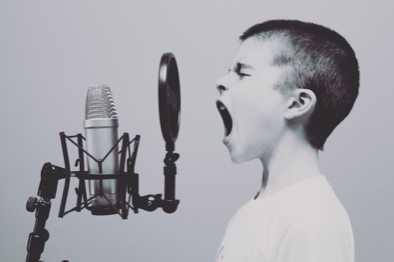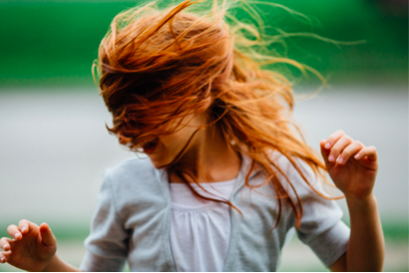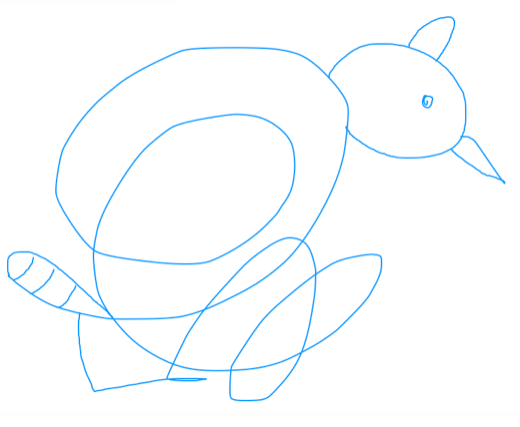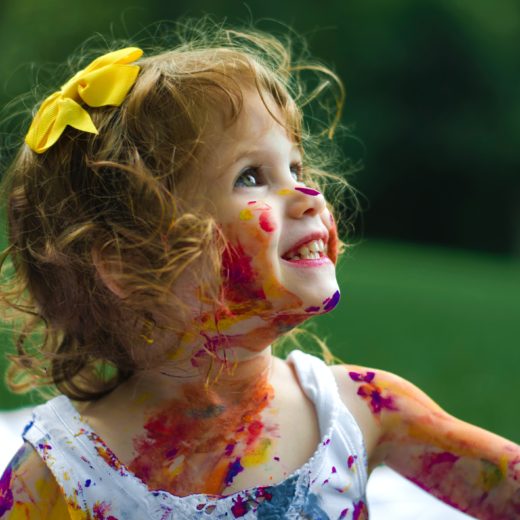In early human times, people relied upon the power of the arts to promote physical and emotional healing. People gathered together to participate in rituals and ceremonies that incorporated dancing, music-making, storytelling, acting, and art-making. The arts were part of daily life for everyone, until approximately 4th Century B.C. when participation in the arts in the West began to be restricted to a privileged few. Around the same time, doctors began viewing the human body as a mechanism, something that needed to be fixed in an objective manner. It wasn’t until the 1940’s that doctors and psychotherapists began to reincorporate the arts into treatment. The arts are a natural means of expression for children and teens. Too often, somewhere along the way to becoming adults, children lose confidence in their ability to create, and block their spontaneous expression. Below are several ideas about how you can encourage your child or teen’s creative expression and promote emotional and mental health.
Responding to your child’s art or creative expression
While there’s not necessarily a right or wrong way to respond to a child’s artwork or creative expression, some approaches tend to be more helpful than others. Empty compliments or praise, such as, “Good job!” or commenting on how good or beautiful your child’s artwork is tend to reinforce the message that the final product is most important. It leaves out the possibility that the process of creating has meaning and value all by itself. It also promotes promotes a dualist mindset, i.e., a belief that everything is either good or bad.
In addition, responding in a dualistic way leaves out important information about what you noticed about your child’s artwork and how your child’s artwork affected you. This kind of input can help your child see their artwork in a different way, and learn from their experience. Sharing what you noticed, or what touched you, also lets your child know that they were heard and seen. This feels good and builds children’s confidence in their ability to touch and influence others.

Before you share your own reflections or observations, invite your child to share their thoughts and feelings about their art. A good place to begin is to simply say, “Tell me about your art.” Then ask your child open-ended questions about their artwork beginning with, “What” or “How,” such as, “How did it feel to make that?” or, “What does it remind you of?” Can also ask your child how it was to create the artwork and what the artwork means to them.
“I don’t know,” is a fine answer, and doesn’t necessarily mean that the experience was meaningless. It may mean that they can’t yet put words to their experience, and need more time to practice. Accept their answer and perhaps use it as an opportunity to ask another question or offer your reflections and observations. Then, if they just completed a drawing, ask your child if they want to take a new piece of paper and draw again.
What parents can share
When you share what you noticed about your child’s artwork, describe the colors, shapes, and lines that you see. For example, you may say, “I see a lot of blue.” Or, “I see a lot of squiggly lines.” Similarly, when responding to a child’s writing, you can comment on the rhythm you heard in their writing, a phrase that stood out, or the images you saw in your mind’s eye while reading. For dance, you might share a movement that stood out to you, or images that came to mind while watching your child dance. While this way of responding may initially feel funny or awkward to you, it tends to feel validating to the child.
Know that when you name objects, people, actions, or creatures that you see in your child’s artwork before your child has had a chance to tell you about their art, and perhaps identify things themselves, you run the risk of mislabeling parts of the artwork. Even if it is very clear that they drew a person, calling the figure “a person” may not capture the totality of what the figure represents for your child. This may result in your child not feeling completely understood.

In addition to sharing the elements of their work that you noticed, you can share how their creation made you feel, or what stayed with you. If their creative expression reminds you of another artist’s artwork, share that reflection with your child. This can lead to conversations that help children open their eyes to the world of art, and explore its potential.
Be cautious about making blanket comments about how good your child is at creating art, dancing, singing, etc. This tends to reinforce a fixed mindset, i.e., that people are either good or bad at art. It doesn’t speak to the fact that we can improve with practice. A fixed mindset often leads to avoiding challenges, giving up easily, ignoring useful feedback, and feeling threatened by others’ success. Be curious and ask your child what they learned from their creative experience to help them learn and grow.
Ideas for creative expression
Looking for creative activities that you and your child can do together? There are few simple activities to try.
Scribble drawing
Scribble drawing isn’t just for little ones. It’s a great tool for people of all ages. It promotes emotional regulation, and can help you identify what is going on for you inside. It also serves as a helpful warm-up, that can be followed by other types of creative activities. When you suggest a drawing activity to your child, let them know it doesn’t matter what their drawing looks like. The joy of making art lies in the process of creating, not in the finished product. Why not try it with them?
Try this: Get set up with a piece of paper and some crayons, colored pencils, or markers. Choose whatever color grabs your attention first. Then start scribbling! Notice your body and how you feel. Do your feelings change as you continue to draw?

Variation #1: When you’re done with your scribble, you can turn your paper around, looking at it with different orientations. Notice if you see an image of an object, person, or other creature in your scribble. If you want, you can bring that image out further by adding details in. Then take a minute to reflect. What comes to mind when you look at your drawing?
Variation #2: You and your child can try creating a scribble drawing together on the same page. This encourages teamwork and promotes bonding.
Variation #3: Encourage your child to put a marker or crayon in each hand and scribble with both hands at the same time.
Photography walk
Photography is an excellent way to practice mindfulness, learn to manage strong emotions and quiet mental chatter, and see or observe clearly. When a child takes a photograph, looks at the image later, and notices the result does not match the perception they had in their minds while taking the photograph, it can feel disappointing. But with encouragement from parents or others, and a little practice, children can learn to focus and observe more clearly. The following exercises are inspired by the book, The Practice of Contemplative Photography, by Andy Karr and Michael Wood.
Try this: Find a place that you and your child can walk and take some photographs. It could be the street you live on. The setting you choose does not have to be beautiful. In fact, rugged, urban settings may offer more raw material to work with than green, natural environments. As you walk with your child, notice all of the bold colors you see, rather than the objects, people, signs, etc., around you. When a color pulls you in, try to frame the image you see in your mind’s eye, identifying where it begins and ends. Finally, pick up your camera, find the image, and take a picture. This approach can produce surprising and satisfying images.
Variation #1: Instead of focusing on colors, focus on textures, i.e. things that are rough, smooth, etc.
Variation #2: This time focus on patterns of light and shadow.
Stay tuned for future blogs with more ideas for creative activities that you and your family can do together. At Intuition Wellness Center, we specialize in health and wellness services for children, young adults, and their families. If you think you would like some extra support, we’re here for you.
Written by: Debby Urken, LMSW


